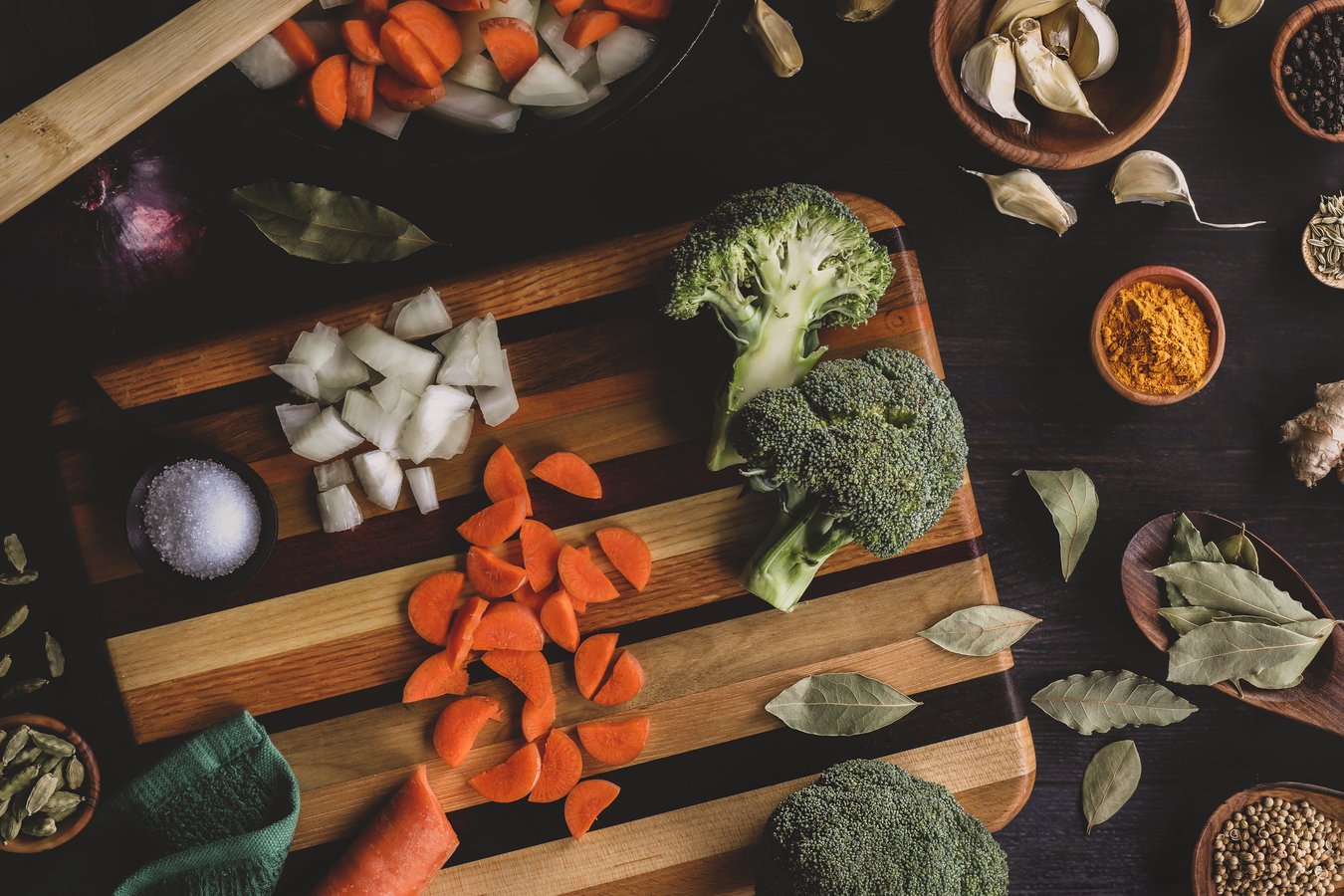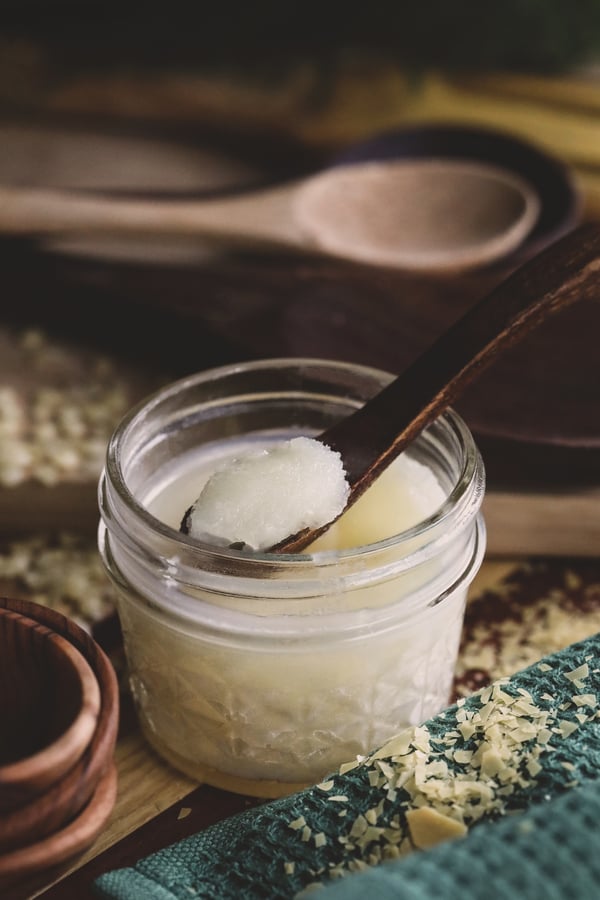I am a wooden utensil and cast iron kind of cook. These reliable, wonderful tools don’t require electricity and they last a remarkably long time if cared for correctly. I especially love the butcher block, cutting boards, and wooden spoons my husband has made over the years, and it’s important to me to take care of them so they last. My dilemma for a long time was how to condition them. Vegetable oils like olive oil, grapeseed oil, etc. are wonderful, but are not shelf-stable and can experience “rancidification” over time, which can make wood smell funky and leave a bad flavor on chopped foods. The standard go-to oil is food-safe mineral oil, sometimes called liquid paraffin. But mineral oil is generally a petroleum product and I don’t care how “food-safe” it is; I don’t want to cut my home-grown vegetables on a board coated with a petroleum-based oil. So, obviously, I had to figure out a DIY way to get around this dilemma and take proper care of my wooden kitchen utensils.
What is the Best Cutting Board Oil?
Organic fractionated coconut MCT (medium-chain triglycerides) oil is made of coconut oil that has been put through a clean, solvent-free cold-extraction centrifuge process to create a clear, odorless, shelf-stable, food-safe liquid coconut oil. These medium-chain triglycerides are highly digestible, providing healthy fats and energy more efficiently to the body. For the purposes of my chopping block and kitchen utensils, the cold-extraction centrifuge process also makes this high-quality, food-grade oil shelf-stable when stored properly.
I discovered quickly that MCT oil alone, when rubbed on and left to soak overnight, is a very effective wood oil. This is actually a great way to oil a new, unseasoned board, butcher block, or utensil. Rub oil all over the board or utensil and put the item(s) on a sheet pan or some such to catch any dripping oil. The next morning, use a piece of clean cloth to wipe away any extra oil from the wood. Bonus: rubbing the oil on with your bare hands has the added benefit of being wonderfully moisturizing for your skin!
For regular upkeep of pre-oiled utensils and boards, I wanted to add just a little wax to help seal in the oil, provide extra protection, increase the lifespan of the wood, and make a less messy product to use and to store between uses. Turns out, the perfect consistency is really easy to achieve! I tried beeswax, vegan carnauba wax, and a combination of the two, and discovered they all work very well. Combining beeswax and carnauba wax is my top choice, mostly because I like the consistency while using it, but the end result in terms of how they worked on the wood was essentially the same with all three versions. I did find, however, that when using 100% carnauba wax, I needed to use slightly more wax-to-oil to achieve a good, workable consistency.
DIY Cutting Board Oil with Beeswax and Carnauba Wax
Makes about 1/2 cup.
- 1/3 cup organic fractionated coconut MCT oil
- 1 tsp. grated beeswax or beeswax pastilles (approximately 4 gr.)
- 1 tsp. organic carnauba wax (approximately 4 gr.)
Note: Alternatively, use 2 tsp. of beeswax alone.
DIY Cutting Board Oil with 100% Carnauba Wax
Makes about 1/2 cup.
- 1/3 cup organic fractionated coconut MCT oil
- 2 1/2 tsp. organic carnauba wax (approximately 12 gr.)
Directions
- In a double boiler over medium-low heat, combine oil and wax(s).
- Whisk regularly as wax melts. Carnauba takes longer to melt than beeswax.
- When fully melted, pour hot liquid into storage container. Tins that seal well are a wonderful option here, but this is also a good time to upcycle a jar with a wide mouth.
- Set open container aside to solidify. When cool, put on lid.
- Label container with product name and date.
- Store in a cool, dark place. A kitchen cabinet away from the stove is a good choice.
To Use
- Using your hands or a clean cloth scrap, rub evenly onto surfaces of board, block, or utensil. Be sure to cover top, bottom, and sides.
- Use a clean cloth scrap to wipe away any excess from wood. Alternatively, you can set aside to soak in overnight, reapply, and then wipe free.
- Repeat monthly or any time you think your utensils and cutting board could use some love.
Pro Tips
- This cutting board oil is good for cutting boards, butcher blocks, wooden utensils, serving bowls, and island- or countertops. If it’s made out of wood, it will appreciate the attention.
- MCT oil is also a fantastic choice for topical preparations like massage oils, skin moisturizers, aroma oils, and perfume blends because it absorbs into the skin much more quickly than solid coconut oil and provides an excellent odorless, color-free base. No need to wash your hands after using; just rub it in!
Want to learn more sustainable kitchen tricks?
See Sustainable Living at Home: 5 DIY Kitchen Swaps
You may also enjoy:













